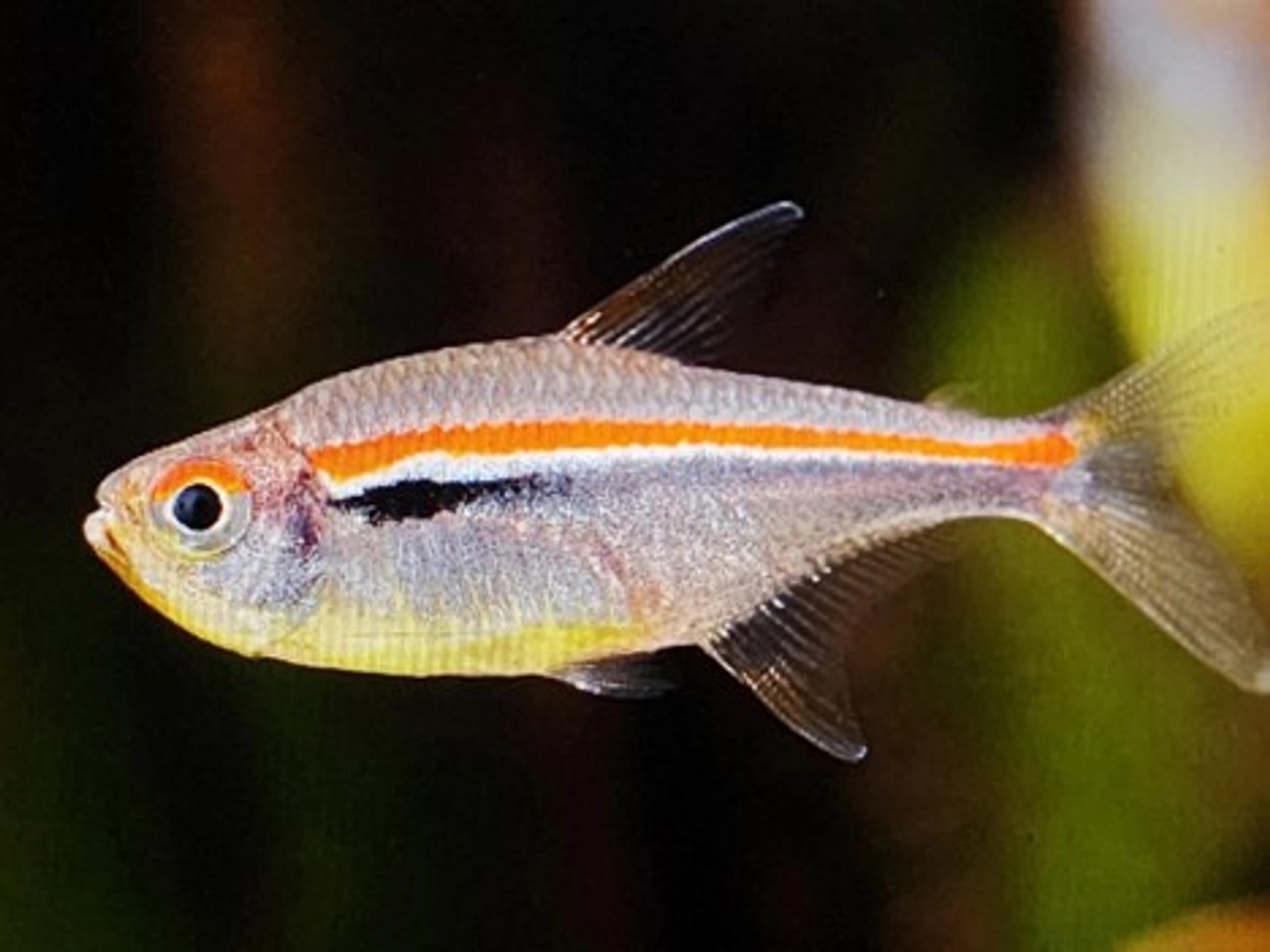

Product Details

Size
1cm - 2.5cm

Temperament
Peaceful
Amapa Tetra Product Description
The Amapa Tetra (Hyphessobrycon amapaensis) is a stunning, vibrant fish species native to the blackwater rivers of Brazil, specifically the Amapá region. Its brilliant iridescent green and red coloration makes it a visually appealing addition to any aquarium. This peaceful and active species is perfect for community tanks, blending well with other small to medium-sized fish. Below is a detailed guide to ensure optimal care and health for your Amapa Tetra.
Water Conditions
- Water Temperature: 72°F to 79°F (22°C to 26°C)
- pH Range: Amapa tetras thrive in slightly acidic to neutral waters, with an ideal pH range of 5.5 to 7.0.
- Water Hardness: Soft to moderately hard water, ranging from 1 to 10 dGH.
- Tank Size: Although they are small fish (around 1.5-2 inches), they enjoy open swimming space, so a tank size of at least 20 gallons is recommended for a small group.
- Filtration: Ensure good filtration to maintain clean water, as these fish come from pristine environments. A low-flow filter is ideal, as Amapa tetras prefer slow-moving waters.
Tank Setup
- Substrate: Fine sand or smooth gravel mimics their natural habitat.
- Plants and Decor: Incorporating live plants like Java moss, Amazon swords, or floating plants creates a natural feel. Driftwood and rocks can be added to replicate the natural soft blackwater conditions.
- Lighting: Moderate lighting is ideal. These fish come from dimly lit environments, so providing shaded areas with plants or décor is recommended.
- Water Changes: Perform regular water changes (around 25% weekly) to keep the water clean and parameters stable.
Tank Mates
Amapa tetras are peaceful community fish and can live harmoniously with other non-aggressive species. Their active and social behavior makes them a great choice for mixed-species tanks.
- Best Tank Mates:
- Other peaceful tetras (Neon Tetras, Ember Tetras)
- Corydoras catfish
- Dwarf Gourami
- Otocinclus catfish
- Rasboras
- Small loaches
- Shrimp and snails (for those seeking invertebrate companions)
- Tank Mates to Avoid:
- Aggressive fish such as cichlids or bettas
- Larger predatory species like angelfish or arowanas
Feeding Habits
Amapa tetras are omnivores, and in the wild, they feed on small insects, larvae, and plant matter. In captivity, they accept a variety of foods, making them easy to care for when it comes to diet.
- Ideal Diet:
- High-quality flake or pellet food designed for tropical fish
- Frozen or live foods such as brine shrimp, daphnia, and bloodworms
- Occasional vegetable matter, such as blanched spinach or zucchini, can help provide a balanced diet.
- Feeding Schedule: Feed them once or twice daily in small amounts that they can consume within 2-3 minutes. Be cautious not to overfeed, as this can lead to water quality issues.
Care and Behavior
- Temperament: Amapa tetras are known for their peaceful and friendly nature. They enjoy the company of their own species and do best in groups of at least 6-8. Being a shoaling species, they feel secure and exhibit more natural behaviors in larger groups.
- Activity Level: These fish are active swimmers and will often be seen darting around the mid-levels of the tank. Their vibrant colors, especially under proper lighting, add a dynamic aesthetic to the aquarium.
- Health and Disease: Like all freshwater fish, Amapa tetras can be susceptible to common aquarium diseases like Ich or fin rot if water conditions are not maintained. Regular monitoring of water parameters, coupled with a healthy diet, will help keep them in optimal health. Quarantine new fish before introducing them to the tank to prevent the spread of disease.
Breeding
Breeding Amapa tetras in captivity is possible but may require specific conditions.
- Spawning Conditions: Slightly softer and more acidic water is ideal for encouraging breeding behavior. Set up a separate breeding tank with plants or a spawning mop to catch the eggs. The breeding pair should be conditioned on high-quality live foods.
- Egg Care: Once spawning occurs, remove the parents, as they may eat the eggs. The eggs typically hatch within 24-36 hours, and the fry will become free-swimming within a few days. Feed the fry infusoria or other liquid fry food until they are large enough to eat crushed flakes or baby brine shrimp.
Amapa tetra 2.5cm
Product Options
1pc
5pcs
10pcs
Delivery
Quantity
 FishList by DesmondLim Teck Whye
FishList by DesmondLim Teck Whye Aquarium Fishes, Tanks & Supplies From FishList by DesmondLim Teck Whye


 SG
SG



